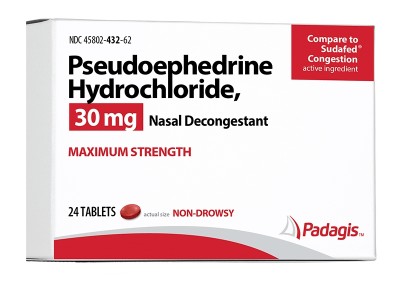Understanding Pseudoephedrine Tolerance
Pseudoephedrine is a common decongestant used to relieve nasal congestion caused by colds, allergies, or sinus infections. However, repeated use of pseudoephedrine can lead to the development of tolerance. This article explores how long pseudoephedrine tolerance lasts, how it develops, and strategies for managing it effectively.
What is Pseudoephedrine Tolerance?
Pseudoephedrine tolerance occurs when the body becomes accustomed to the effects of the drug, requiring higher doses to achieve the same level of relief. This phenomenon can affect the drug's efficacy and prompt users to seek alternative treatments.
How Long Does Pseudoephedrine Tolerance Last?
The duration of pseudoephedrine tolerance can vary significantly depending on individual factors such as dosage, frequency of use, and overall health. Typically, tolerance develops gradually, with noticeable effects emerging after prolonged use. In general, it may take several days to weeks for tolerance to become apparent, and the duration can differ from person to person.
Factors Influencing Tolerance Duration
Several factors influence how quickly pseudoephedrine tolerance develops and how long it lasts. These include:
1. Dosage: Higher doses of pseudoephedrine may lead to faster development of tolerance.
2. Frequency of Use: Regular, frequent use is more likely to result in tolerance than occasional use.
3. Individual Health: Personal health conditions and metabolic rates can affect how the body processes pseudoephedrine.
Managing Pseudoephedrine Tolerance
Effectively managing pseudoephedrine tolerance involves several strategies. First, reducing the frequency of use can help minimize tolerance development. It's also beneficial to consult with a healthcare provider for alternative treatments or medications that do not cause tolerance. In some cases, taking breaks from pseudoephedrine can help restore its effectiveness and reduce tolerance over time.
Recovery from Tolerance
The recovery from pseudoephedrine tolerance generally involves discontinuing use and allowing the body to reset. This process can take several days to weeks, depending on the extent of tolerance and individual recovery rates. During this period, using other methods to manage congestion, such as saline nasal sprays or steam inhalation, can provide relief without relying on pseudoephedrine.
Conclusion
Understanding pseudoephedrine tolerance and its duration is crucial for effective management and maintaining the drug's efficacy. By monitoring usage, adjusting dosage as needed, and exploring alternative treatments, individuals can manage their symptoms while minimizing tolerance-related issues.
